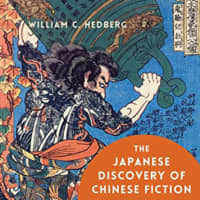The Edo Period (1603-1868) witnessed a fascination for Chinese popular fiction and one of the novels that found particular favor with the public was "The Water Margin." Set during the Song dynasty (960-1279), it is a picaresque tale of 108 outlaws who gain government amnesty for subduing other bandits. It became hugely popular, and its influence spread far beyond the confines of literature.
The Japanese Discovery of Chinese Fiction, by William C. Hedberg.
264 pages
COLUMBIA UNIVERSITY PRESS, Nonfiction.
Remarkably, it also remained for a long time largely incomprehensible to its readers. For centuries, classical Chinese united the intellectual elites of East Asia, much as Latin did in Europe. But the kind of popular fiction that entered Japan from the 17th century was written in the vernacular, a tongue that only a tiny minority of Japanese interpreters in the port city of Nagasaki understood. For most others, it might as well have been Greek.
Understanding this type of fiction required a serious commitment, and a variety of reference guides and dictionaries were published in Japan to facilitate its reading. Another challenge was that there was no single, unadulterated version of "The Water Margin." All imported copies followed the Chinese tradition — a recent one for fiction — of commissioning a third-party to write a commentary to be read in parallel with the text. At times, these authors even rewrote parts of the story to suit their fancy.
William C. Hedberg, an assistant professor of Japanese literature at Arizona State University, examines all of this — and much more — in great detail. But be warned: This is a sober academic study. Beach reading, it is not.



